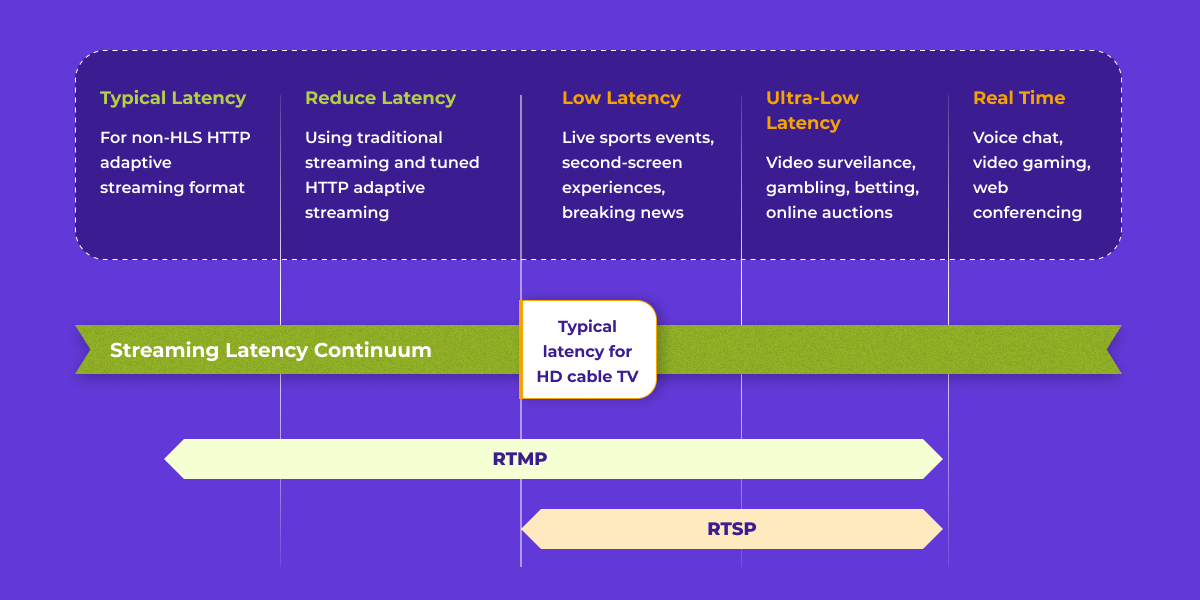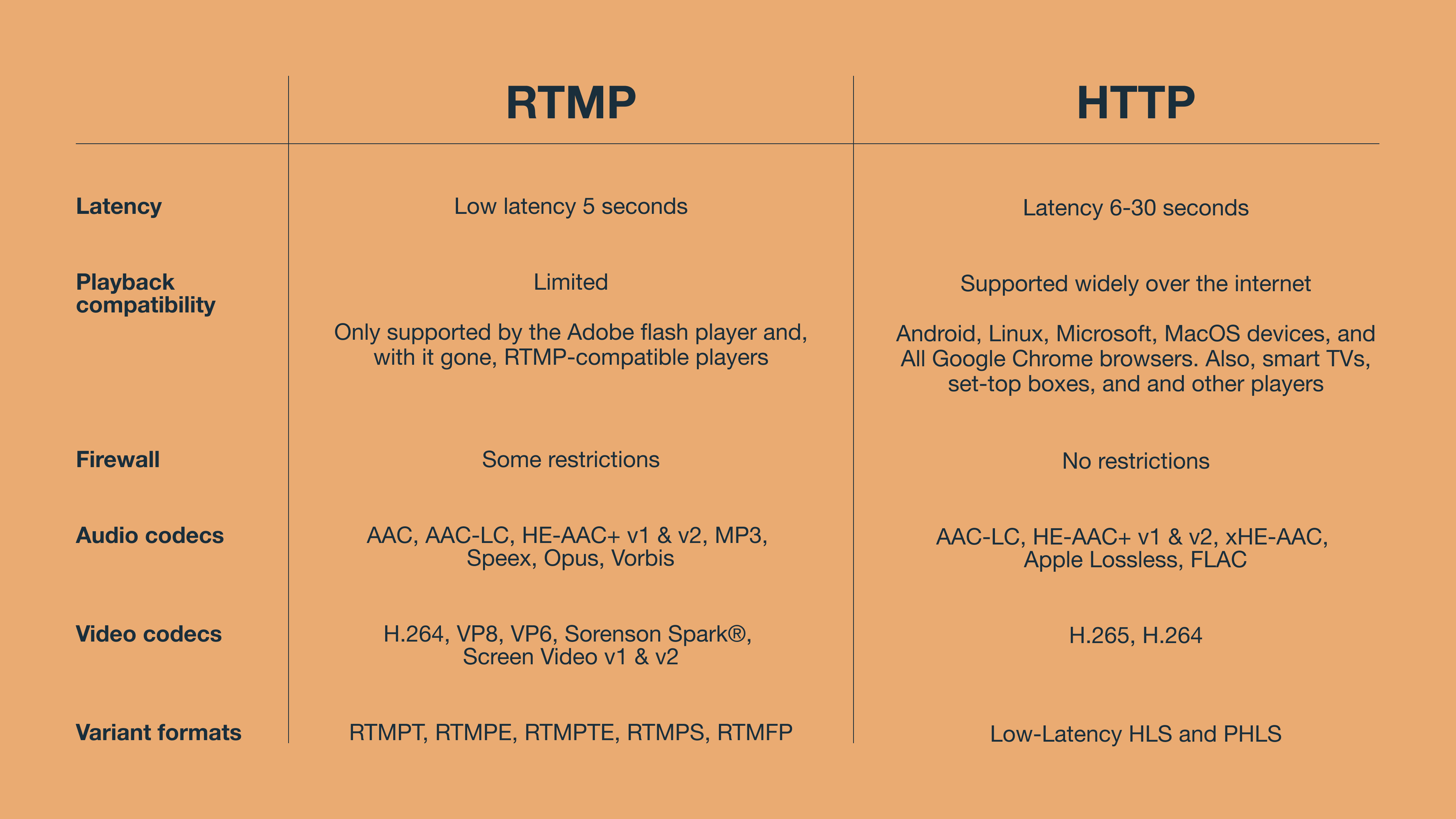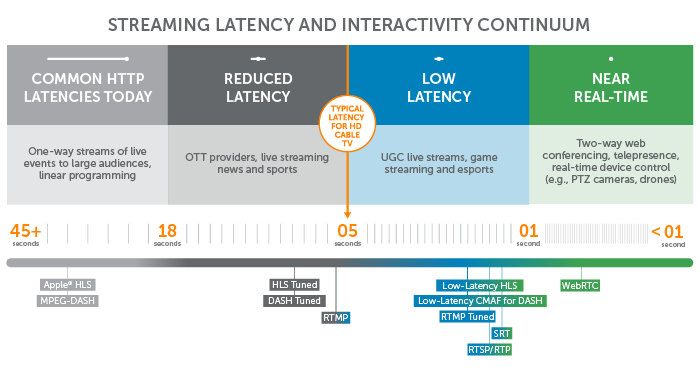RTMP is ideal for live streaming due to low latency, while HTTP is better for on-demand content. Both have unique benefits depending on use cases.
RTMP, or Real-Time Messaging Protocol, excels in real-time data delivery, making it a top choice for live streaming. Its low-latency nature ensures minimal delay, offering a smooth and immediate viewing experience. HTTP, or Hypertext Transfer Protocol, is widely used for delivering on-demand content like videos and web pages.
It is reliable and scales well, supporting a vast range of devices and browsers. RTMP requires a dedicated server, while HTTP streams can leverage standard web servers. Understanding the strengths of each protocol helps in choosing the right one for your streaming needs.

What Is Rtmp?
RTMP stands for Real-Time Messaging Protocol. It is a protocol used for streaming audio, video, and data over the internet. RTMP was developed to transmit high-quality media content with low latency.
History Of Rtmp
RTMP was originally created by Macromedia. Adobe acquired Macromedia in 2005 and continued the development of RTMP. The protocol was initially designed to work with Adobe’s Flash Player. Over the years, RTMP has become a standard for live streaming and broadcasting.
How Rtmp Works
RTMP uses a persistent connection to deliver media streams. It splits the stream into small chunks for efficient delivery. These chunks are sent over a TCP connection, ensuring reliable data transfer.
Here is a simple table illustrating RTMP components:
| Component | Description |
|---|---|
| Server | Receives and distributes the media stream |
| Client | Device or software playing the stream |
| Chunk | Small part of the media stream |
RTMP operates over port 1935 by default. It supports multiple types of media data such as audio, video, and metadata. Here is a list of features:
- Low latency
- Supports multiple audio and video codecs
- Reliable data transfer
In summary, RTMP is vital for real-time media streaming. Its history and functionality make it a cornerstone of online broadcasting.

What Is Http?
HTTP stands for Hypertext Transfer Protocol. It is a protocol used for transferring data over the web. HTTP is the foundation of any data exchange on the Web. It is a protocol used by the World Wide Web.
HTTP is used to load web pages using hypertext links. It is an application layer protocol designed for distributed, collaborative, and hypermedia information systems.
Evolution Of Http
The first version of HTTP was introduced in 1991. It was a simple, text-based protocol. The first version, HTTP/0.9, supported only one command: GET.
HTTP/1.0 was introduced in 1996. It included more commands and status codes. It allowed more complex interactions between clients and servers.
In 1997, HTTP/1.1 became the standard. It brought persistent connections, chunked transfer encoding, and more. It is still widely used today.
HTTP/2 was released in 2015. It aimed to improve performance by reducing latency. It introduced multiplexing, header compression, and server push.
HTTP/3 is the latest version. It uses QUIC instead of TCP for better performance. It is faster and more secure than previous versions.
How Http Works
HTTP works as a request-response protocol. A client sends an HTTP request to a server. The server processes the request and sends an HTTP response back.
HTTP requests and responses have a simple structure. They consist of headers and a body. The headers contain metadata about the request or response. The body contains the actual data being transferred.
Here is a simple example of an HTTP GET request:
GET /index.html HTTP/1.1
Host: www.example.com
And here is a simple example of an HTTP response:
HTTP/1.1 200 OK
Content-Type: text/html
Hello, World!
HTTP supports various methods. The most common are GET, POST, PUT, DELETE, and PATCH. Each method performs a different type of action.
- GET: Requests data from a server.
- POST: Submits data to a server.
- PUT: Updates existing data on a server.
- DELETE: Deletes data from a server.
- PATCH: Partially updates data on a server.
HTTP is stateless by design. Each request is independent of any previous requests. This makes the protocol simple but requires additional mechanisms to maintain state, such as cookies and sessions.
Rtmp Advantages
RTMP (Real-Time Messaging Protocol) is a popular choice for live streaming. It offers several key advantages that make it stand out. This section highlights its benefits, including low latency and high compatibility.
Low Latency
Low latency is a critical feature for live streaming. RTMP ensures that the delay between the live event and the viewer is minimal.
This is crucial for real-time interaction. For example, live sports events benefit from RTMP’s low latency. Viewers get almost instant updates.
| Feature | RTMP | HTTP |
|---|---|---|
| Latency | Low | High |
High Compatibility
High compatibility with various devices and platforms is another advantage. RTMP works seamlessly across different operating systems.
It is supported by many popular media players. This includes Adobe Flash Player and others.
- Adobe Flash Player
- VLC Media Player
- FFmpeg
RTMP is also widely used by streaming services. Platforms like YouTube and Facebook Live support RTMP. This makes it easier for streamers to go live without compatibility issues.

Rtmp Disadvantages
Real-Time Messaging Protocol (RTMP) has served streaming needs for years. Yet, it has some disadvantages. Let’s dive into these drawbacks.
Security Concerns
RTMP has notable security concerns. The protocol uses unencrypted data transfer. This leaves your streams vulnerable to eavesdropping and man-in-the-middle attacks.
Furthermore, RTMP does not natively support HTTPS. This lack of HTTPS support means your streams are not SSL/TLS encrypted. Sensitive data can be at risk.
Scalability Issues
RTMP struggles with scalability. It requires a dedicated server to handle streams. This makes it challenging to scale up for large audiences.
The protocol also depends heavily on a single server. This single-point dependency can cause bottlenecks and server overloads during high traffic.
Here’s a quick overview:
| Issue | Description |
|---|---|
| Dedicated Server | Needs a dedicated server for streaming. |
| Single-Point Dependency | Relies on one server, causing potential bottlenecks. |
These scalability issues make RTMP less ideal for growing platforms. Consider these points before opting for RTMP for large-scale streaming.
Http Advantages
HTTP (Hypertext Transfer Protocol) has become a cornerstone of the web. It offers several advantages over RTMP, making it a preferred choice for many. This section delves into the key benefits of HTTP, focusing on Scalability and Widespread Use.
Scalability
HTTP is highly scalable. It can handle a large number of simultaneous connections. This is crucial for businesses with growing user bases. The protocol supports load balancing efficiently. This ensures smooth performance during traffic spikes.
HTTP also uses content delivery networks (CDNs). CDNs distribute content across multiple servers. This minimizes latency and improves user experience. HTTP’s scalability makes it ideal for large-scale deployments.
Widespread Use
HTTP is widely adopted and supported. Almost every device and browser can use it. This universal compatibility makes HTTP a reliable choice. It ensures your content reaches a broad audience.
Many popular platforms, such as YouTube and Netflix, use HTTP. This demonstrates its robustness and reliability. HTTP’s widespread use means extensive documentation and community support. This makes troubleshooting and implementation easier.
Below is a table summarizing the key advantages of HTTP:
| Advantage | Description |
|---|---|
| Scalability | Handles many connections efficiently, supports CDNs. |
| Widespread Use | Universally compatible, supported by all devices and browsers. |
In summary, HTTP offers significant benefits in terms of scalability and widespread use. These advantages make it a robust choice for web content delivery.
Http Disadvantages
When comparing RTMP and HTTP, it’s vital to understand the disadvantages of HTTP. While HTTP is widely used, it does have its drawbacks. These can impact the performance and user experience of streaming services.
Higher Latency
HTTP often experiences higher latency during streaming. This means there is a delay between the server and the client. This can be problematic for live broadcasts or real-time interactions. The audience might experience a lag, which can be frustrating.
Latency issues arise due to the way HTTP handles data. It breaks the data into packets and sends them one by one. This process takes time, causing delays. On the other hand, RTMP maintains a constant connection, reducing latency significantly.
Complexity
Setting up a streaming service with HTTP can be complex. There are multiple steps involved, and each step requires precision. Misconfigurations can lead to poor performance or failure of the stream.
HTTP streaming demands a robust infrastructure. You need efficient servers, proper bandwidth, and reliable CDNs. This can be a challenge for small businesses or individual streamers. RTMP, in contrast, offers a simpler setup with fewer requirements.
Here is a comparison table highlighting the differences:
| Aspect | HTTP | RTMP |
|---|---|---|
| Latency | Higher | Lower |
| Setup Complexity | High | Low |
| Infrastructure Requirements | Robust | Minimal |
Understanding these disadvantages can help in choosing the right streaming protocol. Each has its own set of challenges and benefits.
Choosing The Right Protocol
Choosing the right streaming protocol can affect your content delivery. Both RTMP and HTTP offer unique benefits and drawbacks. Understanding these can help you decide which protocol suits your needs.
Use Case Scenarios
RTMP is ideal for live streaming. It provides low latency and high-quality video. This makes it perfect for live events and real-time communication.
HTTP is better for on-demand content. It uses HTTP-based protocols like HLS and DASH. These are great for pre-recorded videos. They offer better scalability and flexibility.
| Protocol | Best For |
|---|---|
| RTMP | Live Streaming |
| HTTP | On-Demand Content |
Future Trends In Streaming
Streaming technologies are evolving rapidly. RTMP is slowly being phased out. Many platforms are moving to HTTP-based protocols. These are more compatible with modern devices.
The future of streaming lies in adaptive bitrate streaming. HLS and DASH are leading this trend. They adjust video quality based on the user’s internet speed. This ensures a smooth viewing experience.
Another trend is the rise of WebRTC. It provides real-time communication with low latency. This can be a game-changer for live streaming and online gaming.
- Adaptive bitrate streaming with HLS and DASH
- Real-time communication with WebRTC
Choosing the right protocol depends on your specific needs. Consider both current and future trends in streaming technology.
Frequently Asked Questions
What Is The Main Difference Between Rtmp And Http?
RTMP is a protocol for streaming live video, while HTTP is used for delivering web content. RTMP provides low-latency streaming, making it ideal for live broadcasts. HTTP is more reliable for standard video playback but can have higher latency.
Which Protocol Is Better For Live Streaming?
RTMP is better for live streaming due to its low-latency capabilities. It ensures real-time video delivery, making it ideal for live events. HTTP, while more stable, has higher latency and is better suited for on-demand video.
Can Http Be Used For Live Streaming?
Yes, HTTP can be used for live streaming but with higher latency. Protocols like HLS and DASH, which are based on HTTP, are commonly used. They offer more reliability and scalability but at the cost of real-time interaction.
Is Rtmp Still Widely Used?
RTMP is still used but has seen a decline with the rise of HTTP-based streaming. Many platforms prefer HTTP-based protocols like HLS and DASH for their scalability and compatibility. However, RTMP remains popular for low-latency needs.
Conclusion
Choosing between RTMP and HTTP depends on your streaming needs. RTMP offers low latency, making it ideal for live streaming. HTTP is more versatile and widely supported, suitable for on-demand content. Evaluate your specific requirements to make the best choice.
Both protocols have their unique strengths, ensuring quality streaming experiences.



